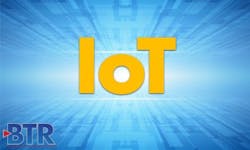According to ABI Research, by 2024, there will be 24 million Internet of Things (IoT) connections made via satellite. The research house sees long-term opportunity within the satellite space for the growth of IoT deployments, particularly in application verticals, such as agriculture and asset tracking, that are limited by terrestrial infrastructures.
"Terrestrial cellular networks only cover 20% of the Earth's surface, while satellite networks can cover the entire surface of the globe, from pole to pole," said Harriet Sumnall, research analyst at ABI. "The expansion of the satellite constellations that are currently in orbit and those due to take place will allow for connectivity to be more global. While the market using satellite connection is still immature, it shows great opportunities for growth."
The application segments that are expected to see significant growth include agriculture, asset tracking, maritime tracking, and aviation tracking. Maritime and aviation tracking are two important markets for the satellite space due to the lack of terrestrial infrastructures available within their location. Vendors such as Aerial & Maritime (A&M) provide aircraft ADS-B surveillance and ship AIS tracking from constellations of nano-satellites. This technology is a game-changer in this industry space, and recent initiatives indicate high-end tracking capabilities from large satellites in multi-constellations. Though this is yet to be considered a cost-efficient process, it is expected to become more so with upcoming Software Defined Radio technology, as it is possible to use nano-satellites for these actions.
The larger and more traditional satellite providers, such as Inmarsat and GlobalStar, are facing new competition from many new startup constellations from vendors like Amazon and SpaceX, which are launching low earth orbit (LEO) satellites. LEO satellites, though, are costly in the setup of the constellations as many satellites are required to give the coverage that vendors are offering. However, in the long run, LEO satellites are more cost-effective than the larger traditional satellites for such applications. The conventional satellite providers will not only have to consider driving their prices down to become more competitive than the newcomers but also be sure they stay relevant within the market, ABI believes.
"Once the market becomes more successful and has matured, the pricing strategies will drop overall, allowing the satellite IoT connectivity options to compete against terrestrial connectivity options," Sumnall said.
